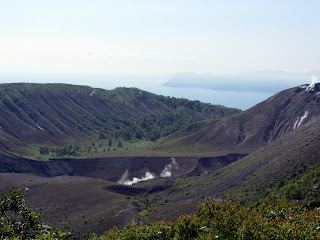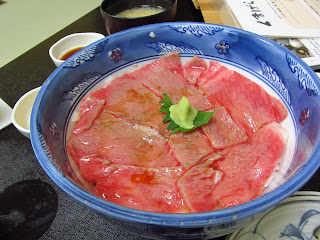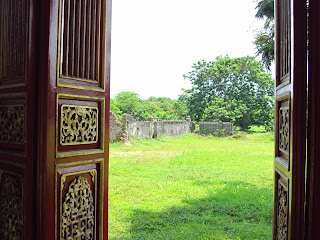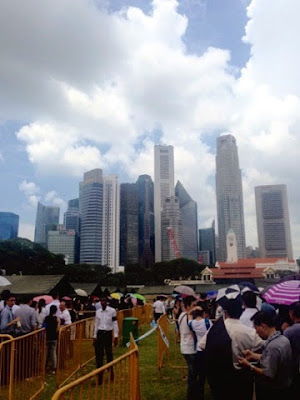This year, I went to Hokkaido to experience the beauty of Japan in flowers and lavender. We arrived in the town of Ashikawa on 11 July and such is the tourist appeal of Hokkaido in the summer, that there is a special "Lavender Bus" from Ashikawa airport straight to Furano. In winter, Furano is all about ski-ing. But in summer, it is about lavender and indeed there is an entire
website devoted to this topic.
There are numerous lavender farms around Furano but one of the most famous is
Farm Tomita, so of course that was where we went. And, we were not disappointed. We had selected the timing of our visit carefully. Lavender, apparently, fluoresces in July and the peak of its fluorescence is in the third week. The Japanese take it very seriously, just as they monitor and track the opening of the cherry blossoms (
"sakura") they also have a fluorescence index to monitor the blooming of the lavender. But of course the peak of the lavender bloom is when the tourists are out in full force and so we decided we would not compete with them and arrived one week before. Even so, the fields were beautiful, a deep purple in colour and stretching out across the horizon.
 |
| Lavender field, Farm Tomita (Lavendin in front, Lavende at the back) |
Now
in a previous visit to Provence in France, we had missed the lavender season (and it was raining) but we learnt there that the French felt that only
their lavender (
"Lavende") was the true lavender and the type found in other countries including Japan was a less form (
"Lavendin"). I am forced to say that I personally find the deep purple of "
Lavendin" far more photogenic. But, I should say also that the Farm Tomita features many varieties of lavender, including (I think) "
Lavende". And in truth, there are many different types of lavender available. A relatively simple list can be found
here.
 |
| Lavende, complete with bee |
 |
| Lavendin, I suspect |
It was also really quite interesting to track the lavender flowers fluorescing. Our hotel had a few pots of lavender out in front and we managed to see the little flowers opening up. I have never really seen the lavender flowers in such profusion before.
 |
| Fluorescing |
Lavender products could also be had a-plenty. And in addition, Furano is well known for its Yubari melon, the price of which can go into the thousands and ten thousands of Japanese yen.Fortunately we got our slice for just 200Y each.
 |
| Yubari melon |
 |
| Lavender Ice Cream |
Lots more photos of my visit to Farm Tomita can be found
here.
We would do more flower gazing the next day, at
Shikisai-no-oka, a flower farm between Furano and the nearby town of Biei. Biei is considered one of the most beautiful villages in Japan - a reference really to the peaceful rolling hills and flower farms and fruit farms in the area. But unfortunately, it was a rainy day when we went there and this discouraged us from roaming around. The flower farm, however, was all one could ask for. Here're one or two pictures just to spark off some interest. More photos can be enjoyed on
my Flickr page.
 |
| Flowers and a distant view of hills |
 |
| Flower fields, Shikisai-no-oka |








































